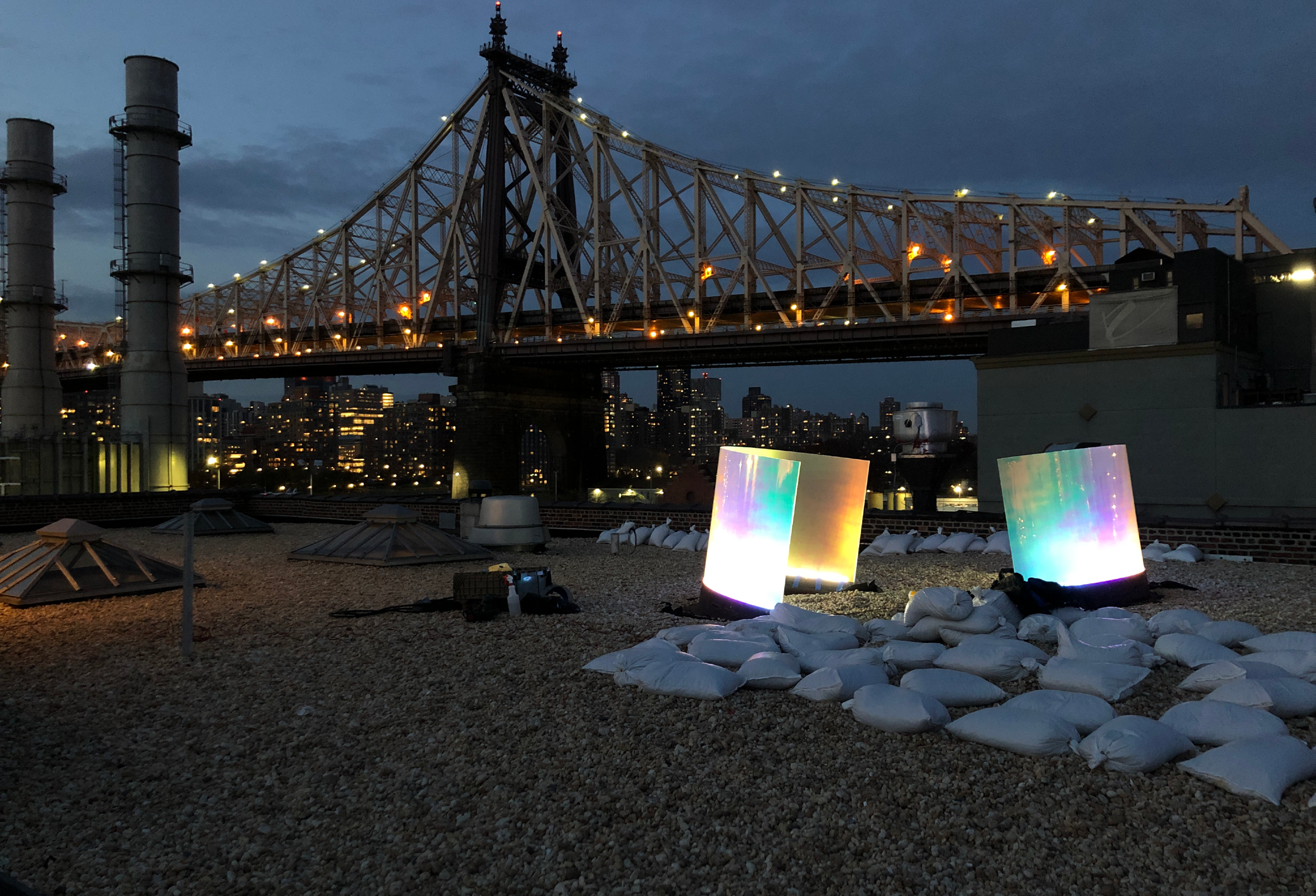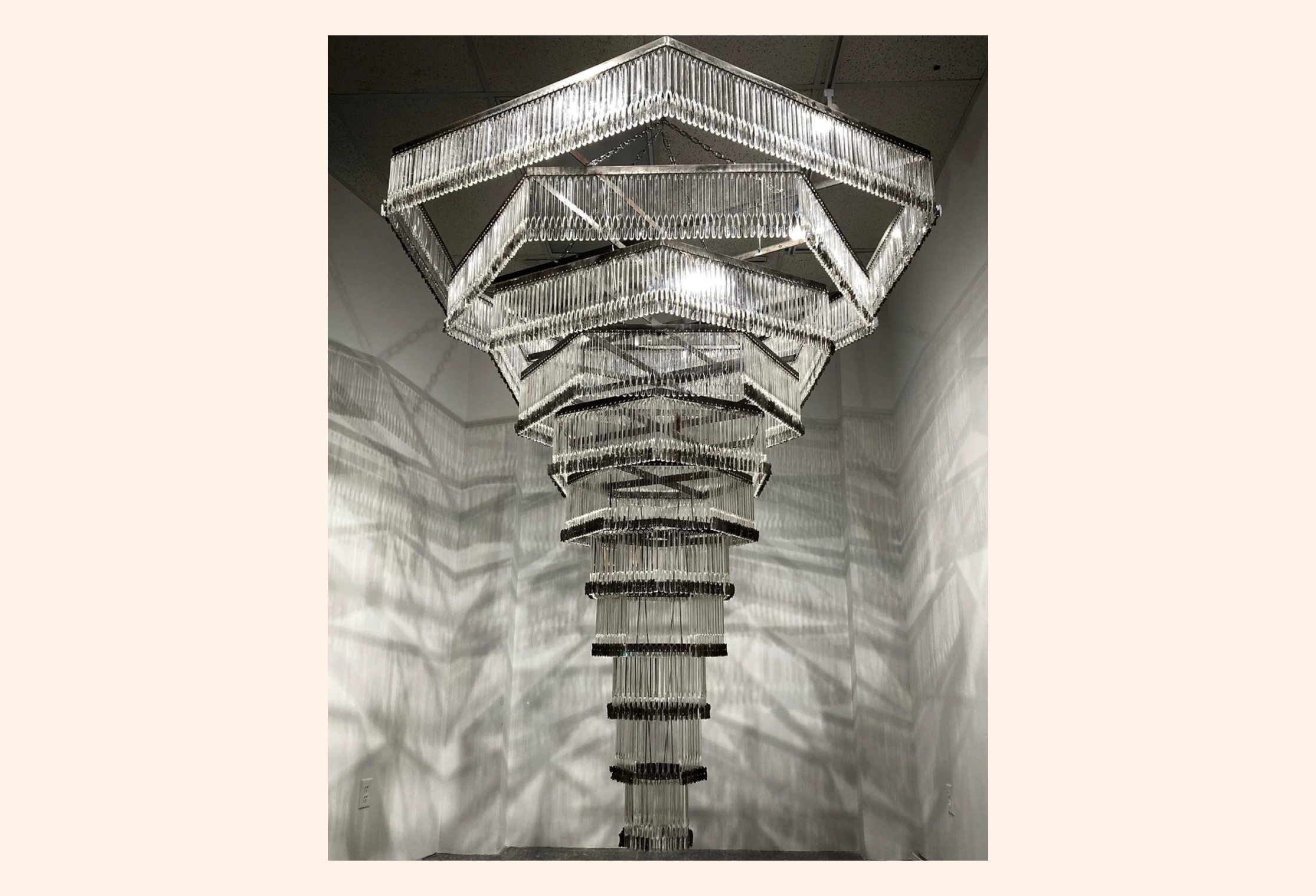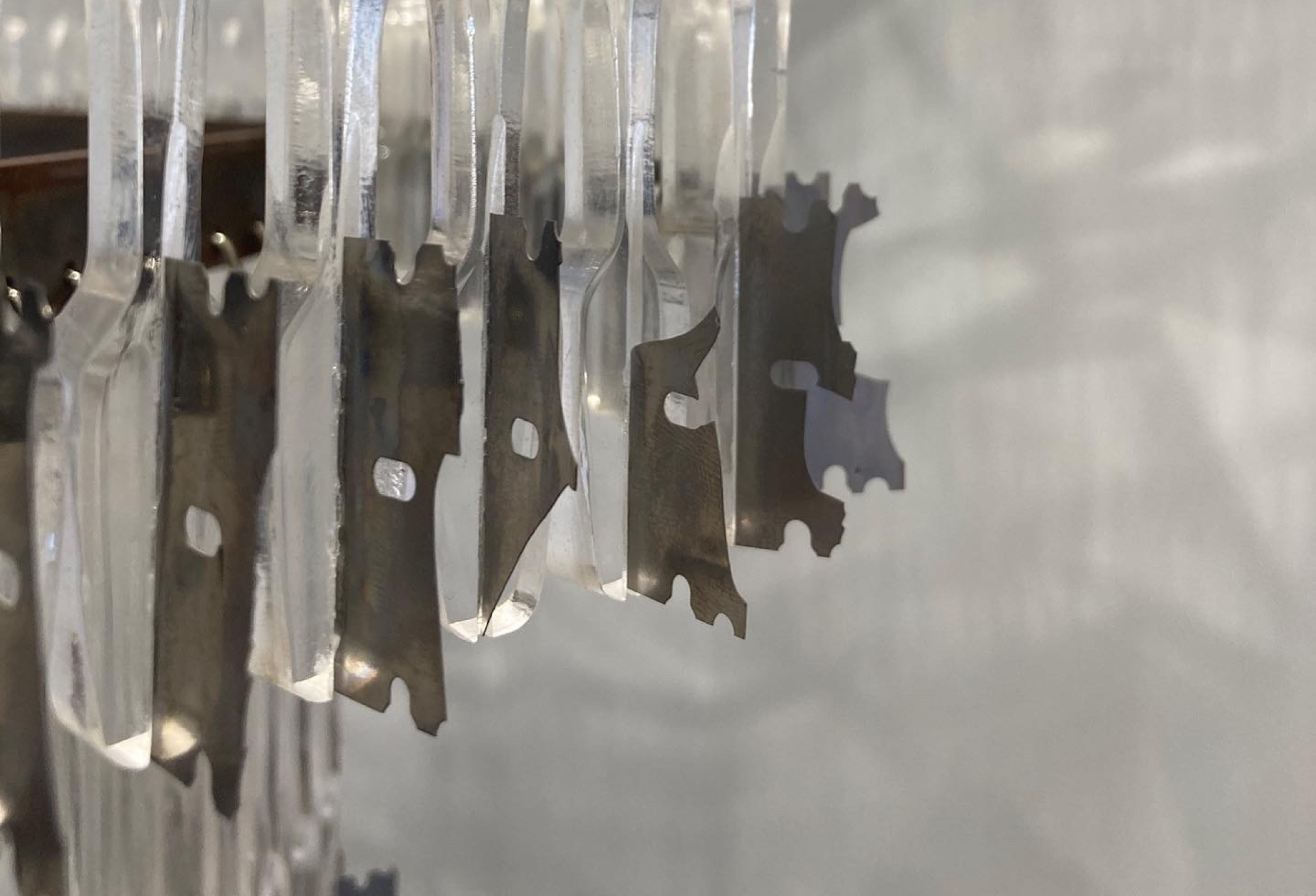Marcus Manganni is a sculptor creating work that interrogates the role architecture plays on mental health and interpersonal connection for people directly impacted by the criminal legal system.
Manganni’s large-scale public works are abstracted segments of institutional architecture created using the sun mapping process he developed while in solitary confinement. These site-specific and ever- changing sculptures use reflection and refraction to engulf viewers in a new, and perhaps unfamiliar, environment–allowing them to experience firsthand how such architecture can be diminutive yet mutable. A reflection on the violence and disruptive nature of solitary confinement, the pieces also serve as a thesis on possible solutions related to how society responds to mental health inequities in the system.
A New York City-based artist, Manganni received a 2022 Right of Return Fellowship, a 2023 Art for Justice Fellowship, and is a recipient of the CRNY initiative. He completed his permanent installation A LOVE LETTER for The Foundry that stands parallel to the Queensboro Bridge in Long Island City as well as his solo show ALIVE ON ARRIVAL at Brackett Creek Exhibitions NY. He was included in The New Black Vanguard exhibition at The Cleveland Museum of Art in collaboration with Jermaine Daley and exhibited at ANTHEM X, a group show curated by Jared Owens for Miami Art Week. He is currently working on his upcoming solo show at Trotter & Sholer Gallery.



